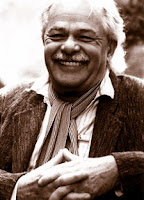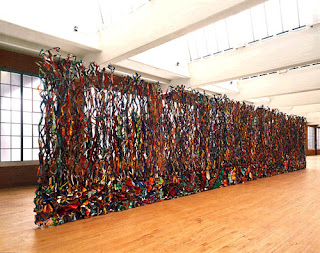Monday, September 24, 2012
Wael Shawky - Documentarist
Wael Shawky's piece, A Glimpse of Clean History - Ceramics, Wood & Velvet comes from his fascination to processes of transition and how an understanding of local systems translates into global relations. The crusades are a prime historical example of a time in transition, of ideological and global expansion. In A Glimpse of Clean History, Shawky introduces his own transformation, albeit with a critical twist: a three-dimensional object in the form of a medieval marionette theater with ceramic dolls. A Glimpse of Clean History transforms the representation of history into a miniaturized theatrical event where the viewers' mode of consumption is mechanically controlled. I admire how he uses art to create and convey his feelings on history and then documents it.
Monday, September 17, 2012
John Cage - Sound in Art
As found on Pbs.org, "In 1952, David Tudor sat down in front of a piano for four minutes and
thirty-three seconds and did nothing. The piece 4′33” written by John
Cage, is possibly the most famous and important piece in twentieth
century avant-garde. 4′33” was a distillation of years of working with
found sound, noise, and alternative instruments. In one short piece,
Cage broke from the history of classical composition and proposed that
the primary act of musical performance was not making music, but
listening." The video of the piece being performed by William Marx can be found here: 4'33" I am not in total favor of this piece per se. I like the idea Cage has of having music being common sounds itself, but I don't like the complete silence. Silence to me, is not music. There has to be something to listen to. But some of his other works are respectable and interesting.
Monday, September 10, 2012
John Chamberlain - Sculptor
Monday, September 3, 2012
Doug Aitken - Cinema
The first image is a photograph taken of Doug Aitken as he worked on Song 1. The second image is a still from the final creation. Wrapping the outside of a circular building in seamless 360-degree video projections took some work. But with Song 1, artist Doug Aitken transforms the drab concrete exterior of the Hirshhorn Museum in Washington, D.C., into a one-of-a-kind audiovisual spectacle. Here is the video itself: Song1 I found that Aitken's video and music choice were seamless. The idea of having projections and beauty on a museum itself is great.
Subscribe to:
Comments (Atom)






